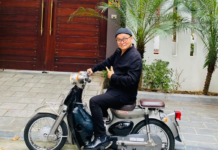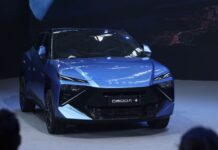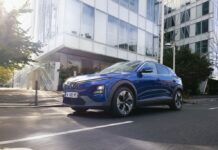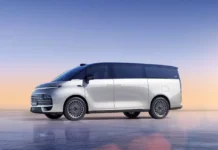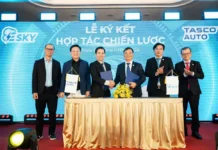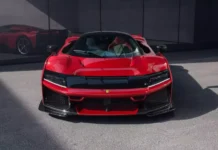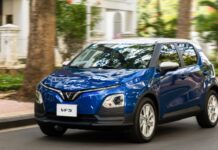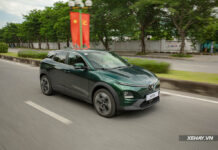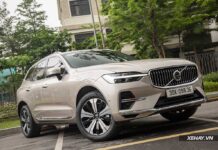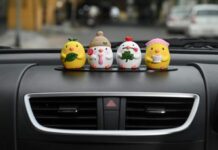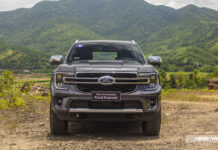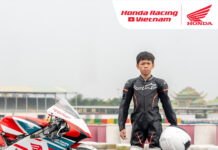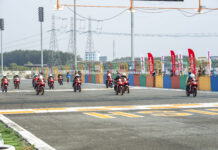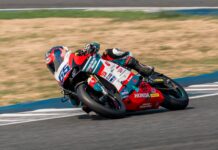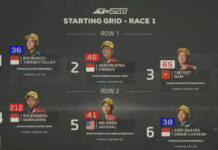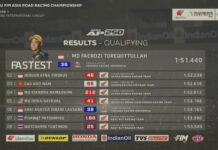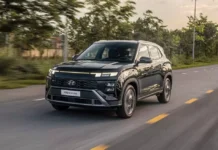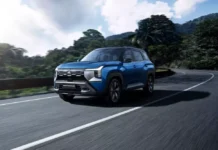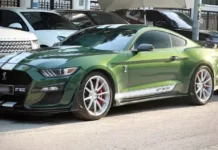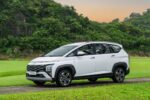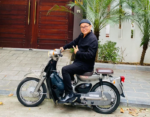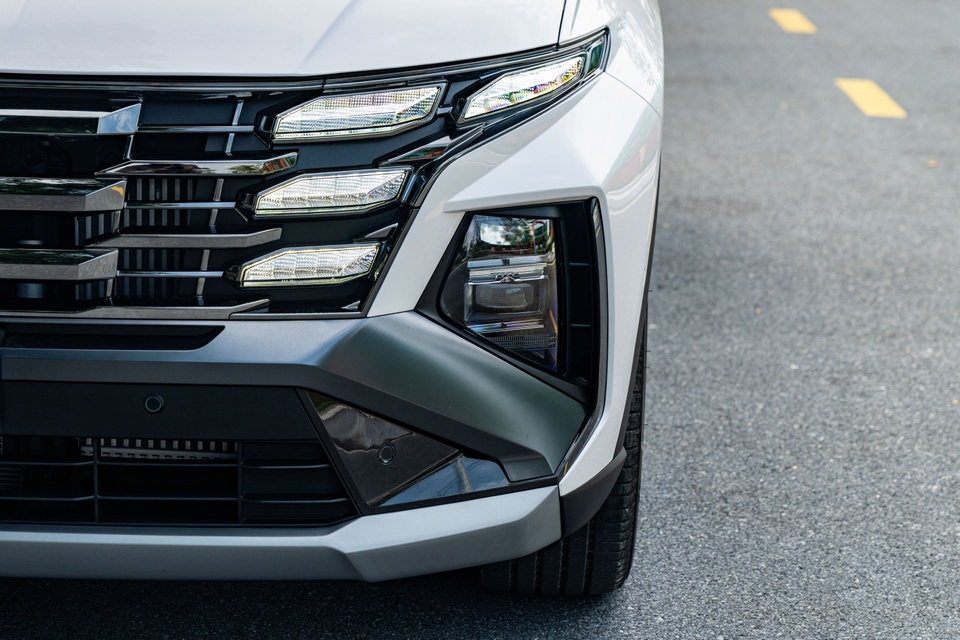
|
The Korean-Japanese automotive rivalry used to be a focal point of interest in the Vietnamese market. Although the number of representatives was limited, Korean cars once dominated sales in the country.
However, the tide has turned quickly in this competition, with results that are not particularly favorable for Korean brands.
Korean Cars Lose Their Luster
In 2023, Hyundai surpassed its direct competitor, Toyota, to become the best-selling passenger car brand in Vietnam. Hyundai’s passenger car sales reached 57,683 units, slightly edging out Toyota’s 57,414 units. That year, Kia also maintained its position as the third best-selling brand, with 40,773 units sold.
In the year that Hyundai topped the market, Vietnamese customers purchased a total of 98,456 cars from the two Korean brands, while the combined sales of Toyota, Mazda, Mitsubishi, Honda, Suzuki, and Isuzu reached 152,566 units.
|
|
|
Hyundai and Kia were once familiar names among the top three best-selling automotive brands in Vietnam. Image source: Thaco. |
In 2022, when the Vietnamese market reached peak sales, Korean car sales totaled 130,574 units, compared to 206,979 units for Japanese brands. That year, Toyota led the market with 91,115 units sold, followed by Hyundai and Kia, with sales of 69,845 and 60,729 units, respectively.
The gap between Korean and Japanese car sales widened to over 80,000 units in 2024, as Japanese brands sold 174,474 units to Vietnamese customers, while Korean brands managed 91,354 units in the same period.
2024 also marked a significant growth in Mitsubishi’s sales thanks to the introduction of the “super rookie” Xforce. With a total of 41,198 units sold, Mitsubishi overtook Kia (34,570 units) to become the third best-selling traditional car brand, only behind Toyota (66,576 units) and Hyundai (56,784 units).
In the first quarter of this year, Korean car sales were less than half of their Japanese counterparts. Specifically, the combined sales of Hyundai and Kia totaled 15,038 units, while the group of Japanese brands, including Toyota, Mitsubishi, Mazda, Honda, Suzuki, and Isuzu, sold 32,997 units.
| Korean Cars Are Falling Behind in the Race with Japanese Cars | ||||
| Sales Comparison of Korean and Japanese Cars from 2022 to 2025 (Data Source: VAMA, TC Motor) | ||||
| Label | 2022 | 2023 | 2024 | Q1/2025 |
| Korean Cars | 130,574 | 98,456 | 91,354 | 15,038 |
| Japanese Cars | 206,979 | 152,566 | 174,472 | 32,997 |
Overall, Korean car sales in Vietnam have declined consecutively from 2022 to 2024. Even for Hyundai, the best-selling Korean brand in the country, this trend is evident.
Local Assembly Advantage Isn’t Enough
Compared to Japanese brands, Korean cars in Vietnam are almost entirely locally assembled. Kia assembles all its vehicles at the Thaco plant in Quang Nam province, and Hyundai also assembles most of its models domestically, except for the Hyundai Stargazer, which is imported from Indonesia.
Local assembly was thought to be a significant advantage for Hyundai and Kia over their Japanese competitors. However, recent developments suggest that this “local” factor alone is not enough for the success of Korean cars.
For instance, the sales of the Hyundai Creta plummeted after it transitioned to local assembly, causing this B-segment SUV to almost concede defeat to the Toyota Corolla Cross in the sales race back in 2023.
|
|
|
Hyundai Creta became the best-selling B-segment SUV in Vietnam in 2023 but struggled to compete in 2024. Image source: TC Motor. |
It was only when the sales of the Corolla Cross dropped significantly in the fourth quarter of 2023 due to the launch of its “little brother,” the Toyota Yaris Cross, that the Hyundai Creta seized the opportunity to overtake and become the best-selling B-segment SUV for the year.
In 2024, Korean models in this segment, including the Kia Seltos and Hyundai Creta, were largely left behind in the sales race. The B-segment SUV market witnessed the dominance of Indonesian-imported Japanese models, including the two newcomers: the Mitsubishi Xforce and Toyota Yaris Cross.
In the C-segment SUV category, the Kia Sportage and Hyundai Tucson also failed to outsell the Mazda CX-5.
Most of the models in this segment are locally assembled, including the Mitsubishi Outlander and most versions of the Honda CR-V sold in Vietnam. However, none of them could surpass the Mazda CX-5, which has led the C-segment SUV market for several consecutive years.
|
|
|
Hyundai Tucson and Kia Sportage struggle to compete with the Mazda CX-5 in the C-segment SUV market in Vietnam. Image source: Phuc Hau. |
Korean automotive brands are known for their frequent design changes and upgrades. However, this rapid update cycle can be a double-edged sword, as customers may feel disappointed if a new version is released shortly after they purchase their “new” car.
For example, the all-new Hyundai Santa Fe, featuring a completely revamped exterior design, was introduced to the Vietnamese market in September 2024. However, recent reports suggest that a facelifted version with minor design changes will be released as early as next year.
While these constant design updates and technology improvements keep Korean cars looking modern and fresh, they may also make recently purchased models seem outdated. This could be a reason why Korean cars are losing their appeal among Vietnamese customers.
The Tide May Not Turn Soon
As mentioned earlier, the sales performance of the two Korean brands in the first quarter of this year was less than half of their Japanese competitors. This trend is even more evident when looking at the top 10 best-selling internal combustion engine cars in Vietnam during the same period.
In this ranking, the Hyundai Accent was the only Korean model to make the list, with sales of 2,034 units, placing it eighth in the market for the first quarter, considering only internal combustion engine cars.
|
|
|
Hyundai Accent is the only Korean model among the top 10 best-selling internal combustion engine cars in Q1/2025. Image source: TC Motor. |
Expanding our perspective, we find that out of the 20 best-selling internal combustion engine cars in Vietnam in the first quarter of this year, six are Korean models, evenly split between Hyundai and Kia. American cars contribute three models, and the rest are Japanese brands.
With Japanese cars dominating the market and the rise of Vietnamese domestic brands and Chinese carmakers, it is predicted that Korean cars will face increasing challenges. VinFast, for example, offers a diverse range of electric vehicles across multiple segments, along with the advantage of lower operating costs. Chinese carmakers, on the other hand, are attracting customers with their affordable pricing strategies, which could further erode the market share of Korean cars.
In summary, Korean cars seem to be falling behind in the sales race with Japanese brands. The pressure from new competitors may force Korean carmakers to adapt if they want to prevent further erosion of their market share.
Suggested Reading for Your Journey
Our Automotive section recommends captivating books with diverse themes to accompany you on your travels. During those moments of rest and relaxation, a good book can be an engaging companion.
“Hyundai’s June Offer: 100% Pre-Registration Fee Support for Car Buyers.”
Hyundai Motor Company and its authorized distributor in Vietnam, Thanh Cong Auto Joint Stock Company, are thrilled to announce a compelling promotional program for all Hyundai car models. From now until the end of June 2025, customers can take advantage of a remarkable offer of up to 100% discount on registration fees.

